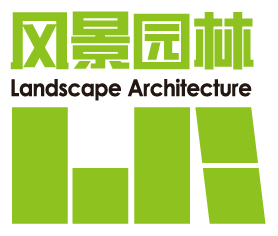Abstract:
Objective As the national capital of China and a megacity, Beijing urgently needs to explore new pathways for harmonious coexistence between humans and nature to achieve high-quality development. Against this backdrop, advancing the Garden City initiative has become a critical strategic task. To translate the goals of Garden City development into actionable and measurable practices, establishing a scientific and context-appropriate evaluation framework is imperative as fundamental support. Currently, there is a lack of specialized systematic assessment tools for evaluating Garden City initiatives. This gap hinders the ability to effectively guide implementation, monitor progress, and precisely quantify nature’s contribution to public well-being. Therefore, the core objective of this research is to develop a dedicated indicator system for Beijing’s Garden City development, and establish a set of quantifiable indicators integrating critical dimensions.
Methods This research positions the future value of Garden City from a historical perspective. By reviewing the evolution of relevant indicator systems, the research identifies the iterative process and development trends of urban-nature indicator systems. Subsequently, the research combines the needs of Beijing’s urban planning and management to discuss the approach and characteristics of constructing Beijing’s Garden City Indicator System.
Results Since the 1990s, city – nature evaluation frameworks and indicators have continuously evolved, playing an increasingly significant role in optimizing urban natural systems and advancing sustainable development. Globally, there is growing emphasis on promoting city – nature evaluation systems, with urban biodiversity and nature’s contributions to people becoming critical dimensions for measuring future urban progress. Reviewing the evolution of specific indicators within the aforesaid city – nature evaluation frameworks reveals that the focus on city – nature relationships has shifted: From emphasizing green quantity to quality; from concentrating on ecosystem services to caring about nature’s contribution to human’s well-being, and from objective indicators for quantitative evaluation to indicators valuing residents’ actual experiences and perceptions. There is a growing emphasis on assessing the interactions between urban residents and nature. These trends, particularly the focus on natural well-being and human-centered considerations, align with the future value of the Garden City. The key challenges that require further innovation and exploration in establishing the evaluation system for Beijing’s Garden City include how to more systematically highlight this future value of Garden City while building on these trends, how to showcase Beijing’s unique characteristics, and how to ensure the system aligns with practical management needs. In 2024, Beijing formulated the “Beijing Garden City Special Plan (2023 – 2035)”, which includes Beijing’s Garden City Indicator System constructed by this research. The indicator system highlights the core future value of the Garden City, namely enhancing public well-being based on nature, and encompasses 29 evaluation indicators. It concretizes the future value of Beijing’s Garden City across six aspects: Enhancing habitat quality in natural spaces, highlighting the capital’s landscape artistry, providing green ecological recreational experiences, creating publicly shared green spaces, strengthening climate-resilient urban adaptability, and fostering integrated production – living – ecological urban scenarios.
Conclusion Beijing’s Garden City Indicator System aligns with international trends by centering assessments on urban human – nature interactions, and fully integrates Beijing’s specific conditions, characterized by a strong value orientation, the ease of assessment and management, the reflection of the capital’s distinctive features, and a focus on shared benefits for all citizens and tangible experiences. This system will support the planning, construction, and development of the Garden City under the ecological civilization framework. Future development of Beijing’s Garden City should be grounded in the core value of “enhancing public well-being based on nature”. Building upon current foundations, city-nature relationships must be iteratively advanced and the indicator system leveraged to promote symbiotic development. Critical focus areas include urban biodiversity conservation, presentation of mountain-water cultural heritage, enhancement of residents’ recreational experiences, public participation in shared governance, climate adaptation through nature-based solutions, and integration of natural elements with urban renewal scenarios. Compared to global explorations during the 20th-century industrial civilization era, China’s ecological civilization system provides stronger institutional support for Garden City development. Beijing’s Garden City Indicator System holds significant potential to renew urban-nature symbiotic relationships and contribute innovative models to global practices.

 下载:
下载:
